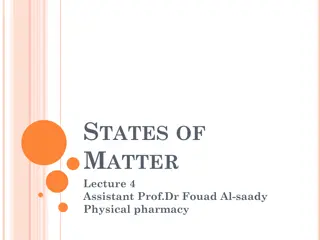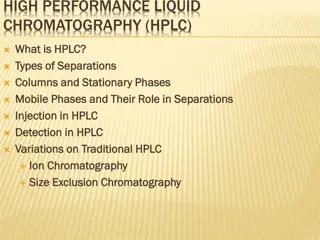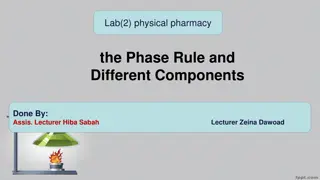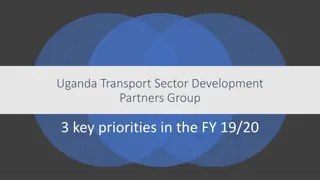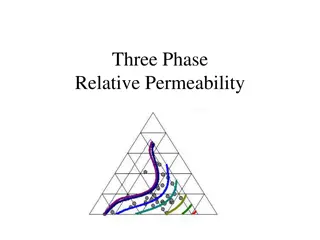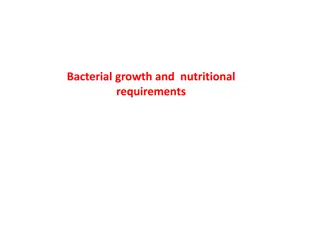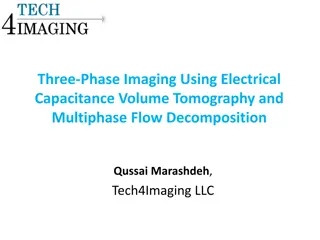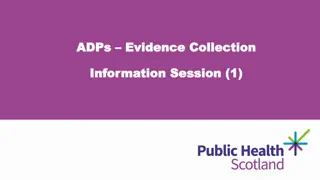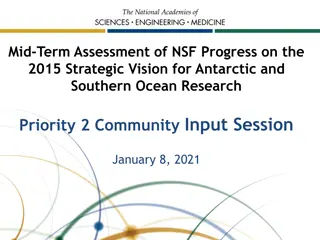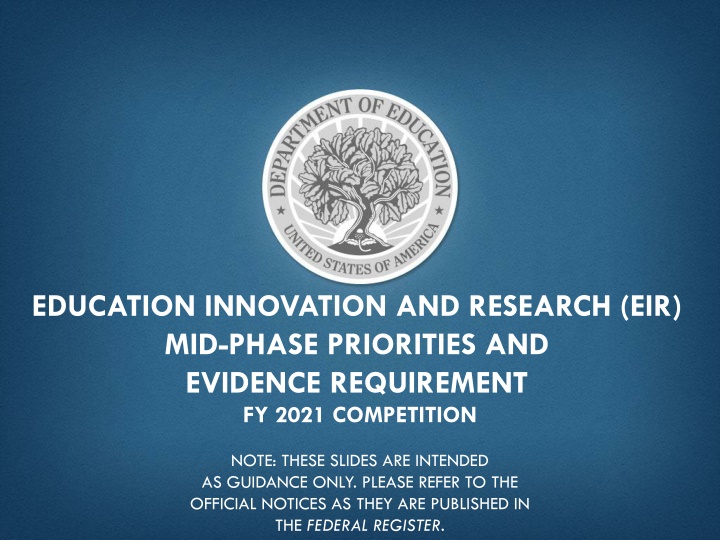
EIR Mid-Phase Priorities for FY 2021 Competition
Learn about the priorities, evidence requirements, and focus areas for the Education, Innovation, and Research (EIR) Mid-Phase competition for the fiscal year 2021. Discover the absolute and invitational priorities, examples of applicant-selected priorities, and detailed explanations of moderate evidence criteria.
Download Presentation

Please find below an Image/Link to download the presentation.
The content on the website is provided AS IS for your information and personal use only. It may not be sold, licensed, or shared on other websites without obtaining consent from the author. If you encounter any issues during the download, it is possible that the publisher has removed the file from their server.
You are allowed to download the files provided on this website for personal or commercial use, subject to the condition that they are used lawfully. All files are the property of their respective owners.
The content on the website is provided AS IS for your information and personal use only. It may not be sold, licensed, or shared on other websites without obtaining consent from the author.
E N D
Presentation Transcript
EDUCATION INNOVATION AND RESEARCH (EIR) MID-PHASE PRIORITIES AND EVIDENCE REQUIREMENT FY 2021 COMPETITION NOTE: THESE SLIDES ARE INTENDED AS GUIDANCE ONLY. PLEASE REFER TO THE OFFICIAL NOTICES AS THEY ARE PUBLISHED IN THE FEDERAL REGISTER.
MID-PHASE PRIORITIES Absolute Priority (AP) 1: Moderate Evidence All Mid-phase applicants must address this priority. 2
MID-PHASE PRIORITIES Mid-phase applicants must select one of the absolute priorities listed below. Applicants must clearly indicate which one in their abstract and project narrative. Absolute Priority 2: Field-Initiated Innovations General Absolute Priority 3: Field-Initiated Innovations Science, Technology, Engineering, or Mathematics (STEM) Competitive Preference Priority 1: Computer Science Applicants applying under Absolute Priority 3 have the option to also address the competitive preference priority. Absolute Priority 4: Field-Initiated Innovations Fostering Knowledge and Promoting the Development of Skills That Prepare Students To Be Informed, Thoughtful, and Productive Individuals and Citizens The priority promotes social and emotional learning (SEL). 3
MID-PHASE INVITATIONAL PRIORITIES Invitational Priority 1: Innovative Approaches to Addressing the Impact of COVID-19 on Underserved Students and Educators Applicants have the option of addressing one or more invitational priority, regardless of which absolute priority they submit under. Invitational Priority 2: Promoting Equity and Adequacy in Student Access to Educational Resources and Opportunities 4
EXAMPLES OF APPLICANT-SELECTED MID-PHASE PRIORITIES AP1: Moderate Evidence AP2: General AP3: STEM CPP1: Computer Science AP4: SEL IP1: COVID IP2: Equity Example 1 X X X Example 2 X X X Example 3 X X X Example 4 X X X X X Example 5 X X X Example 6 X X 5
WHAT IS MODERATE EVIDENCE? (1 OF 2) Moderate evidence means that there is evidence of effectiveness of a key project component in improving a relevant outcome (as defined in this notice) for a sample that overlaps with the populations or settings proposed to receive that component, based on a relevant finding from one of the following: (i) A practice guide prepared by the WWC using version 2.1, 3.0, 4.0, or 4.1 of the WWC Handbooks reporting a strong evidence base or moderate evidence base for the corresponding practice guide recommendation; (ii) An intervention report prepared by the WWC using version 2.1, 3.0, 4.0, or 4.1 of the WWC Handbooks reporting a positive effect or potentially positive effect on a relevant outcome based on a medium to large extent of evidence, with no reporting of a negative effect or potentially negative effect on a relevant outcome; or (continued) 6
WHAT IS MODERATE EVIDENCE? (2 OF 2) (iii) A single experimental study (as defined in this notice) or quasi- experimental design study (as defined in this notice) reviewed and reported by the WWC using version 2.1, 3.0, 4.0, or 4.1 of the WWC Handbooks, or otherwise assessed by the Department using version 4.1 of the WWC Handbook, as appropriate and that (A) Meets WWC standards with or without reservations; (B) Includes at least one statistically significant and positive (i.e., favorable) effect on a relevant outcome; (C) Includes no overriding statistically significant and negative effects on relevant outcomes reported in the study or in a corresponding WWC intervention report prepared under version 2.1, 3.0, 4.0, or 4.1of the WWC Handbooks; and (D) Is based on a sample from more than one site (e.g., States, counties, cities, school districts, or postsecondary campuses) and includes at least 350 students or other individuals across sites. Multiple studies of the same project component that each meet requirements in paragraphs (iii)(A), (B), and (C) of this definition may together satisfy this requirement. 7
HOW DO YOU DEMONSTRATE THAT YOU MEET MODERATE EVIDENCE? Use the Evidence form that is included in the application package Identify up to 2 study citations to be reviewed against the WWC handbook, and for each include a description of: The positive student outcomes to be replicated, and a description of how the characteristics of the students in the study correspond to those high needs students proposed in the application how the proposed practices correspond between the study and the proposed application the intended student outcomes that the proposed practice(s) attempts to impact Citations must refer to publicly available sources (provide links or other guidance) Applicants will NOT get an opportunity to provide additional information; however, study authors may be asked by the WWC to respond to queries on key aspects of the study design. 8
MID-PHASE EVIDENCE STANDARDS CHECKLIST Absolute Priority 1 - Moderate Evidence Standards Checklist This Evidence Requirements Checklist is intended to help applicants determine what studies to include on the Evidence Form with their application for the purposes of meeting the evidence requirement. This checklist is a resource and not required in the grant application. As such, the checklist should not be submitted with the application. Applicants can use the checklist as an informal worksheet to understand the evidence criteria used to review studies and learn about additional evidence-related resources available online. 10
CONSIDERATIONS FOR SELECTING EVIDENCE Is it a quasi-experimental or experimental study? Is there a finding that is relevant to a proposed practice of your project? Does the cited finding examine the relationship between a practice and a student outcome or other relevant outcome? Is the cited finding based on a large sample? Is the cited finding based on a multi-site sample? Does the sample for the cited finding overlap with a population or setting for your proposed project? Is the cited finding a statistically significant and positive effect? 11
WHAT WORKS CLEARINGHOUSE In reviewing potential sources of moderate evidence, you might first review the What Works Clearinghouse to determine if there is an intervention report, practice guide, or individual study that has already been reviewed. Institute of Education Sciences Finding Evidence on What Works Clearinghouse Webinar is a helpful resource. o Tier 1 or Tier 2 studies have the potential to meet the moderate evidence definition. Tier 3 and Tier 4 studies will NOT meet the moderate evidence definition. The Department will use Study Review Protocol Version 4.1 to conduct new evidence reviews. 12
MID-PHASE ABSOLUTE PRIORITY 2 Field-initiated innovations General Under the priority, we provide funding to projects that are designed to create develop, implement, replicate, and take to scale entrepreneurial, evidence-based, field-initiated innovations to improve student achievement and attainment. 13
MID-PHASE ABSOLUTE PRIORITY 3 Field-initiated innovations -- Promoting STEM education, with particular focus on computer science Under the priority, we provide funding to projects that are designed to: 1. Create, develop, implement, replicate, or take to scale entrepreneurial, evidence-based, field-initiated innovations to improve student achievement and attainment for high-need students, and; 2. Improve student achievement or other educational outcomes in one or more of the following areas: science, technology, engineering, math, or computer science (as defined in the notice). Within Absolute Priority 3, we give competitive preference (up to 5 points) to applications that address the computer science competitive preference priority. 14
COMPETITIVE PREFERENCE PRIORITY COMPUTER SCIENCE Projects designed to improve student achievement or other educational outcomes in computer science. These projects must address expanding access to and participation in rigorous computer science coursework for traditionally underrepresented students such as racial or ethnic minorities, women, students in communities served by rural local educational agencies (as defined in this notice), children or students with disabilities (as defined in this notice), or low-income individuals (as defined under section 312(g) of the Higher Education Act of 1965, as amended). 15
RURAL LOCAL EDUCATION AGENCY (LEA) DEFINITION Traditionally underrepresented students served under this priority can include students in communities served by Rural LEAs. The Mid-phase NIA defines Rural LEA as the following: Rural local educational agency means a local educational agency that is eligible under the Small Rural School Achievement (SRSA) program or the Rural and Low-Income School (RLIS) program authorized under Title V, Part B of the ESEA. Eligible applicants may determine whether a particular district is eligible for these programs by referring to information on the Department's website at https://oese.ed.gov/files/2021/05/FY2021_Master_Eligibility_Sprea dsheet-public51221.xlsx *please use the updated the link. 16
MID-PHASE ABSOLUTE PRIORITY 4 Field-initiated innovations -- Fostering Knowledge and Promoting the Development of Skills That Prepare Students To Be Informed, Thoughtful, and Productive Individuals and Citizens Under the priority, we provide funding to projects that are designed to: 1. Create, develop, implement, replicate, or take to scale entrepreneurial, evidence-based, field-initiated innovations to improve student achievement and attainment for high-need students; and advance innovation, build evidence, and address the learning and achievement of high-need students beginning in Pre-K through grade 12 17
MID-PHASE ABSOLUTE PRIORITY 4 (CONT.) Field-initiated innovations -- Fostering Knowledge and Promoting the Development of Skills That Prepare Students To Be Informed, Thoughtful, and Productive Individuals and Citizens Under the priority, we provide funding to projects that are designed to: 2. Improve student academic performance and better prepare students for employment, responsible citizenship, and fulfilling lives, including by preparing children or students to do one or more of the following: (a) Develop positive personal relationships with others. (b) Develop determination, perseverance, and the ability to overcome obstacles. (c) Develop self-esteem through perseverance and earned success. (d) Develop problem-solving skills. (e) Develop self-regulation in order to work toward long-term goals. 18
REMINDER: MID-PHASE GRANTEES ARE ENCOURAGED TO SCALE TO A REGIONAL OR NATIONAL LEVEL Regional (see definition in the notice inviting applications): Serve a variety of communities in a state or multiple states Serve different student groups If an LEA-based project, must serve students in more than one LEA National (see definition in the notice inviting applications): Serve a wide variety of communities Serve different student groups Resource for consideration: Scaling up Evidence-Based Practices: Strategies from Investing in Innovation (i3) 19
EDUCATION INNOVATION AND RESEARCH (EIR) MID-PHASE PRIORITIES AND EVIDENCE REQUIREMENT NOTE: THESE SLIDES ARE INTENDED AS GUIDANCE ONLY. PLEASE REFER TO THE OFFICIAL NOTICES AS THEY ARE PUBLISHED IN THE FEDERAL REGISTER.






